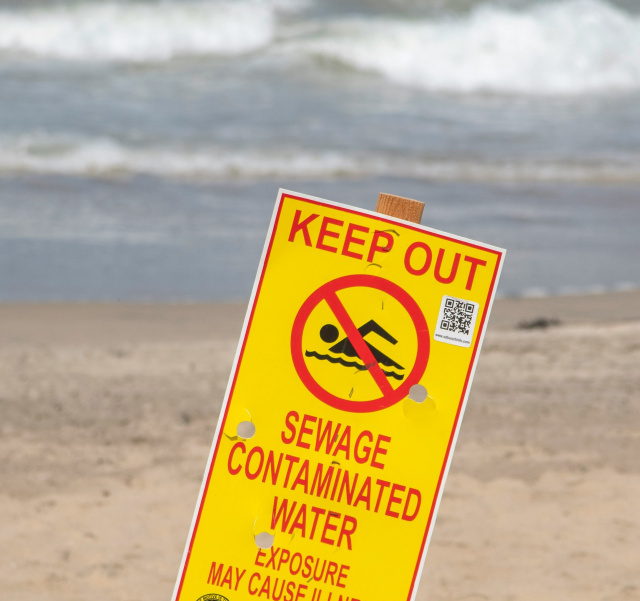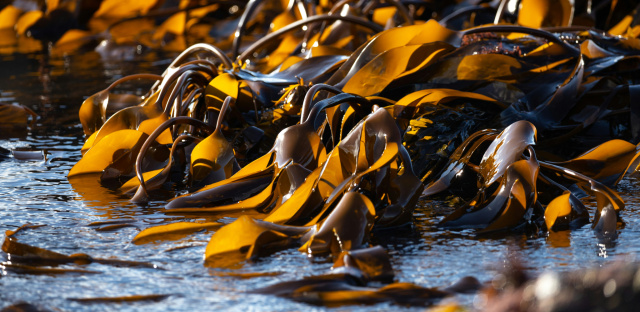Operation Crayweed
In the 1960s and 1970s around Sydney, we had quite near shore ocean discharges for raw sewage. If you look near Manly, you can still see the remnants of where we just dumped our sewage straight into the beach. Quite often if you got a big swell, as you dump the sewage out, then it would just blow back onshore. If you grew up surfing in that area, you would grow up surfing in sewage, effectively. So because we were dumping that sewage, that was one of the primary reasons that it's believed that the Crayweed disappeared. But no-one noticed for more than 20 years and it wasn't really until the 1990s and 2000s that people realized that the Crayweed has gone.

So when they realized that the Crayweed had disappeared, the scientists looked at ways that they could restore that. They founded Operation Crayweed, and formed these great partnerships with things like surf-wear companies, who have a strong interest in environmental restoration.
So what they were able to do, was go out identify the male and female Crayweed, and then relocate it, and it spawns. Now because the water quality has increased so much since we've stopped dumping our sewage in near-shore environments, it is successfully spawning. There's a spot at Bondi, for example, where the Crayweed has extended more than 200 meters from where they've initially planted it. We're starting to see that with a little bit of help, it's not only self-sustaining, but starting to thrive again.
These Crayweeds are like ecological foundations in our marine environments. If you take that away, everything else goes. If you bring that back, then everything else comes back with it. The monitoring in that type of study and research program is really trying to focus on what is the coverage they're able to achieve. What we are seeing, with our partnerships with local divers, for example, are species in Sydney harbour that haven’t been seen for decades.

These Crayweeds are like ecological foundations in our marine environments. If you take that away, everything else goes. If you bring that back, then everything else comes back with it.
In the 1960s and 1970s around Sydney, we had quite near shore ocean discharges for raw sewage. If you look near Manly, you can still see the remnants of where we just dumped our sewage straight into the beach. Quite often if you got a big swell, as you dump the sewage out, then it would just blow back onshore. If you grew up surfing in that area, you would grow up surfing in sewage, effectively. So because we were dumping that sewage, that was one of the primary reasons that it's believed that the Crayweed disappeared. But no-one noticed for more than 20 years and it wasn't really until the 1990s and 2000s that people realized that the Crayweed has gone.

So when they realized that the Crayweed had disappeared, the scientists looked at ways that they could restore that. They founded Operation Crayweed, and formed these great partnerships with things like surf-wear companies, who have a strong interest in environmental restoration.
So what they were able to do, was go out identify the male and female Crayweed, and then relocate it, and it spawns. Now because the water quality has increased so much since we've stopped dumping our sewage in near-shore environments, it is successfully spawning. There's a spot at Bondi, for example, where the Crayweed has extended more than 200 meters from where they've initially planted it. We're starting to see that with a little bit of help, it's not only self-sustaining, but starting to thrive again.
These Crayweeds are like ecological foundations in our marine environments. If you take that away, everything else goes. If you bring that back, then everything else comes back with it. The monitoring in that type of study and research program is really trying to focus on what is the coverage they're able to achieve. What we are seeing, with our partnerships with local divers, for example, are species in Sydney harbour that haven’t been seen for decades.

These Crayweeds are like ecological foundations in our marine environments. If you take that away, everything else goes. If you bring that back, then everything else comes back with it.
You might like...

Bruny Island crucial for the Swift Parrot
Bruny Island is one of the most important breeding habitats for the Swift Parrot. It has the habitat that the Swift Parrots need to produce their chicks in tree hollows, and it is also free of the Sugar Glider – a key introduced predator.

Children in Nature
Naturalist Kate Eccles reflects on the importance of childhood connection with nature

Nomadic Mountain Life in Northern Pakistan
Nomadic Life in the Mountains of Northern Pakistan is one framed by the unadulterated beauty of nature. At the heart of this existence lies the attentive care of precious livestock.

A place of wild diversity
Bruny Island - an island, off an island, off an island - is home to a phenomenal array of wildlife, says specialist guide with Inala Nature Tours, Cat Davidson. It's not just the more well-known species; everywhere you go, everywhere you look, is teeming with biodiversity. For nature lovers, it's an island paradise.
Newsletter
Sign up to keep in touch with articles, updates, events or news from Kuno, your platform for nature
